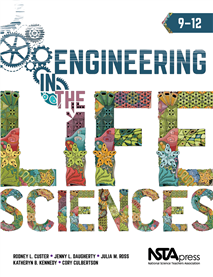Understanding the Intermingling of Engineering and Life Sciences (and How Best to Teach It)
By Carole Hayward
Posted on 2018-12-18
 For engineers to design and make the systems and devices all of us depend on in our daily lives, they need scientific and mathematical knowledge. Simultaneously, scientists benefit from engineering advances evident in the devices, instruments, and processes they use to test and understand the natural world.
For engineers to design and make the systems and devices all of us depend on in our daily lives, they need scientific and mathematical knowledge. Simultaneously, scientists benefit from engineering advances evident in the devices, instruments, and processes they use to test and understand the natural world.
Project Infuse, a National Science-funded project, has been exploring the complex and interdependent relationship between science and engineering to help physical science teachers enrich their teaching and learning with engineering design projects and other real-world applications. Some of the logistical challenges this project revealed were selecting and designing appropriate classroom activities; managing projects which required group work as well as multiple solutions to problems; and the need for new assessments and pedagogies.
So a team of five experts (Rodney Custer, Jenny Daugherty, Julia Ross, Katheryn Kennedy and Cory Culbertson) came together to write Engineering in the Life Sciences, 9-12, a compendium of teacher resources, engineering-infused life science lessons, and assessment tools, all of which were pilot tested with real students in a real classroom.
The book’s content is spread across six chapters, beginning with an overview of how engineering fits into life science education.
Chapter 2 offers six engineering-infused life science lessons which Project Infuse teachers deemed the most important components of the book. Each lesson includes a comprehensive list of core elements: an overview; goals; assessment criteria; recommendations on when the lesson should be taught within a unit; a content outline; needed materials; resources; time recommendations for each stage of the lesson; instructional sequence; differentiation options; research on student learning; connections to the Common Core State Standards; source references; engineering and live science rubrics; and a matrix for lesson development and assessment.
Chapter 3 focuses on the practicality of delivering engineering design challenges and projects in science classrooms, beginning with the rollout (setting the stage), moving into ideation (guiding students toward good design), prototyping, and wrapping up.
Assessment (both summative and formative) is the focus of Chapter 4, which explores the implications for assessment under the NGSS and describes practical classroom issues and tools.
Chapter 5 offers additional lesson ideas across a broad range of interesting topics such as bio-security, green city design, invasive species control, next-generation prosthetics, and unnatural selection.
“The intent of this chapter is to plant some seeds of ideas that teachers may wish to develop into lessons,” according to the authors.
The book’s final chapter presents five engineering case studies to ignite classroom conversations around how engineering was used to find a solution to a real-world problem or opportunity. The examples were deliberately selected to span a range of science and engineering fields and can be used:
- To introduce students to engineering concepts (constraints, design, systems, and/or tradeoffs);
- As a starting point for a larger research assignment; and/or
- To spark student conversation to open-ended questions.
“In our work with science teachers and students, discussion of these as studies have provided a starting point to view and understand something of how engineering works in a variety of real-world situations, and we trust that others will find them equally useful,” explained the authors.
High school life science educators who are seeking teacher-tested and classroom-ready resources will find this book contains a treasure trove of fresh ideas. Ready to learn more? A free chapter is available, and the book is also available as an ebook.
Follow NSTA
Disclaimer: The views expressed in this blog post are those of the author(s) and do not necessarily reflect the official position of the National Science Teaching Association (NSTA).


